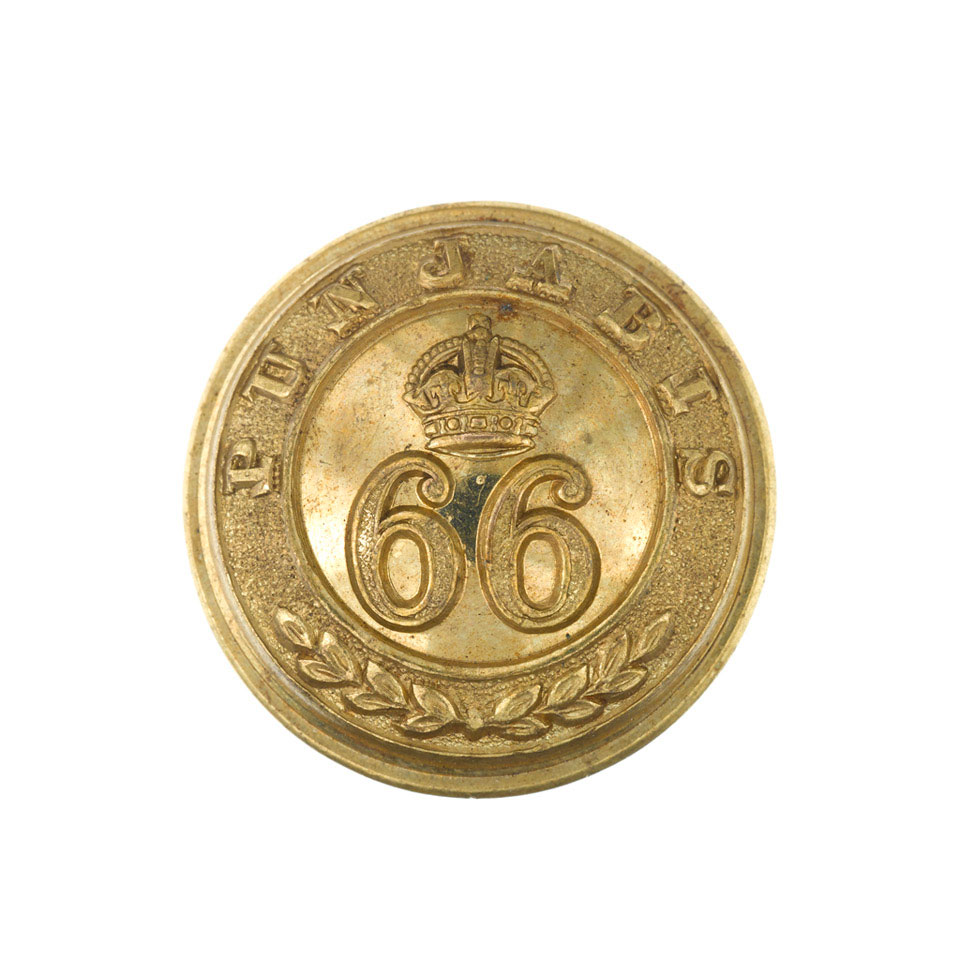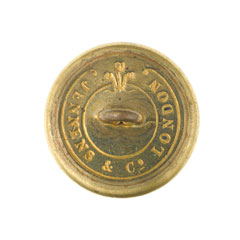
Online Collection
« Prev - 1 of 1 results - Next »
Button, 66th Punjabis, 1903-1922
Large brass button made by Jennens and Company, London, with the regimental number, '66', surmounted by a King's Crown, within a circlet with the title, 'Punjabis', and a wreath in the lower section.
The 66th Punjabis was originally raised in 1761 as the 7th Battalion of Coast Sepoys. The unit fought in the Mysore Wars and, as the 6th Regiment of Madras Native Infantry, gained its dragon insignia for its service in the 1st China War (1839-1842). After a number of minor name changes
The regiment became the 66th Punjabis in 1903. The regiment served in the Middle East during World War One (1914-1918), forming part of the ill-fated garrison of Kut. The regiment was severely depleted by the harsh conditions during the period of captivity that followed the fall of Kut in 1916.
The reformed regiment returned to India in time to participate in the 3rd Aghan War (1919). In a reorganisation of the Indian Army in 1922 the 1st Punjab Regiment was created, with its 2nd Battalion formed from the 66th Punjabis Regiment. In 1947, with the Partition of India, the 2nd Battalion, 1st Punjab Regiment became the 2nd Battalion Punjab Regiment, part of the Pakistan Army.
From the Field Marshal Sir John Chapple Indian Army Collection.
NAM Accession Number
NAM. 2013-10-20-27-48
Copyright/Ownership
National Army Museum Copyright
Location
National Army Museum, Study collection
Object URL
https://collection.nam.ac.uk/detail.php?acc=2013-10-20-27-48


